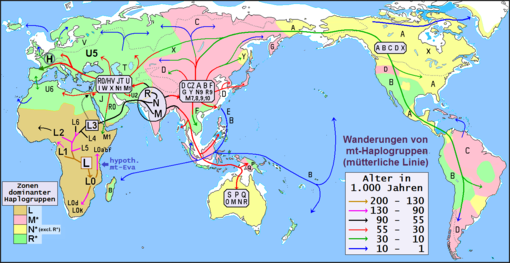Land bridge

In geomorphology, a land bridge describes a strip of land that connects two land masses that are otherwise separated by seas. The narrowest point of a land bridge is called the isthmus . Land bridges are created by regression , by the sinking of the sea level (e.g. during the last cold period ), by plate tectonics , or occasionally by postglacial land uplift . Land bridges can also disappear again, for example due to plate tectonic movements or the (re) rise of sea levels in a warm period .
To the land bridges include the existing sand dunes tomboli and by extension temporarily occurring strip of land to (semi) islands in lakes and rivers, and sand bars that fall dry at low tide. Humans have also created artificial land bridges, thus turning islands into peninsulas .
Land bridges are of particular importance in biogeography as they make it easier for animals and plants to colonize new areas (fauna and flora exchange).
Examples
- Tertiary
- The Gibraltar threshold , which formed about six to five million years ago a land bridge and the Messinian salinity crisis led
- Pleistocene and Early Holocene:
- Beringia (Bering Bridge) between Asia and North America
- Doggerland between mainland Europe and the British Isles
- The Adam's Bridge between India and Sri Lanka
- The land bridge in the Bass Strait , which temporarily connected Tasmania to mainland Australia
- recent
- The Isthmus of Panama , the formation of which three million years ago enabled the Great American Faun Exchange
- The Sinai Peninsula , which connects Africa and Eurasia
Land bridge hypotheses
In the 19th and 20th centuries, a large number of land bridge hypotheses were put forward to explain the widely spaced distribution areas of closely related organisms. Most of these hypotheses, however, became obsolete with the knowledge of plate tectonics and continental drift .
Individual evidence
- ^ Up-and-Down Landbridges. In: William R. Corliss : Mysteries Beneath the Sea. Apollo Editions, 1975, ISBN 0-8152-0373-X .
